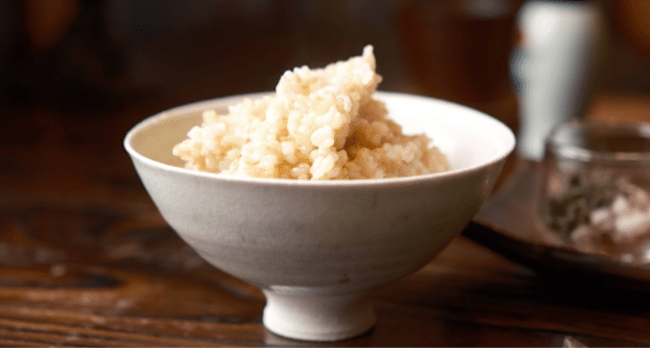Table of Contents
Endurance isn’t just about willpower — it’s built in the kitchen, refined on the track, and sustained by science. From marathon runners in Yangon to cyclists training in Mandalay’s humidity, what fuels the body shapes how far it can go. Nutrition plays a central role in athletic performance, yet so many overlook the specifics that truly matter. How do certain foods impact stamina? What does the data say? Let’s take a closer look at this article.
Fueling the Body for Long-Lasting Energy
To keep going when others give up, the body needs a steady, reliable source of energy. Low-glycemic carbohydrates like brown rice, lentils, and oatmeal provide long-lasting energy without the sugar spikes. Interestingly, Myanmar has a rapidly growing sports culture, with many not just training, but following competitions via the MelBet Myanmar site, a cutting-edge platform with over 50 sports, live betting, and access to top events around the world. As for nutrition, a 2023 study by the Southeast Sports Institute found that endurance athletes who consumed complex carbohydrates before training reduced the time to fatigue by 13%. And here’s another surprising tip: coconut water, popular in the region, is not only refreshing, but also contains potassium and magnesium, which prevent cramps.
The Role of Timing in Endurance Nutrition
In endurance nutrition, timing is everything. 2-3 hours before training — a light carbohydrate meal: 1-2 g per kilogram of weight. This is a reserve of glucose that the body will begin to burn in the first minutes. According to the Myanmar Fitness Council, during long-term loads, taking 30-60 g of carbohydrates per hour helps to delay fatigue by almost 22%. A banana or energy gel every 45 minutes is not nonsense, but a working strategy.
After training—a quick refueling. The ideal ratio of carbohydrates to protein is 3:1 in the first half hour. A simple smoothie with banana, peanut butter, and milk is a great solution. Well, while it is whipped in a blender, you can read the guide https://guidebook.melbet.com/account/registration/ and register in the sports betting app. Just 30 seconds — and you are already in the game: live bets, matches, odds, everything at hand. Support your favorite team not only with your heart!
Macronutrients That Support Stamina
In endurance sports, nutrition is not just a support, but the basis of the result. The main thing here is a competent balance of macronutrients. Here’s what you should focus on:
- Carbohydrates: This is still the main source of energy. From 60 to 70% of calories in the diet should come from here. Sweet potatoes, rice noodles, whole grain bread – all this works for you, especially over long distances.
- Proteins: are responsible for muscle recovery and “repair”. You need about 1.2-1.6 g of protein per kilogram of body weight per day. In Myanmar, for example, fish, eggs, or tofu are often used, affordable, and effective.
- Fats: especially important for long-term and moderate exercise. It is better to focus on healthy fats – they are found in nuts, avocados, sesame, and other vegetable oils.
- Fiber: helps maintain digestion and stabilizes blood sugar levels. Sources are fruits like papaya and guava, as well as cabbage, carrots, and other vegetables.
Each macronutrient is part of a system. When all the elements are in place, the body works stably, without failures, like a well-oiled machine.
Hydration Strategies for Peak Performance
Water is more than just a thirst quencher. It is the foundation of endurance. According to the Myanmar Sports Medicine Association, losing just 2% of your fluid can reduce your endurance by up to 10%. So, a smart hydration strategy is a must. Drink 500-700 ml of water two hours before your workout. And during the workout itself, drink 150-250 ml every 15-20 minutes. In hot weather or during long sessions, add electrolytes to help avoid cramps and fatigue.
After your workout, the goal is not just to drink, but to replenish what you’ve lost. For every kilogram of weight lost through sweat, drink 1.5 liters of fluid. Coconut water, homemade rehydration drinks, or light sports mixes with minimal sugar are all good options. And yes, a regular urine color test still works. Light yellow means you’re on the right track. It’s simple, but critically important.
Plant-Based vs. High-Protein Plans
The debate continues: Is plant power enough for endurance, or does high-protein rule the track? Here’s how they compare:
| Feature | Plant-Based Plan | High-Protein Plan |
| Energy Source | Carbs from legumes, grains, and fruits | Lean meats, dairy, eggs |
| Protein Quantity | Moderate (1–1.3g/kg body weight) | High (1.6–2g/kg body weight) |
| Micronutrient Support | High in antioxidants (vitamin C, E, iron) | Rich in B12, zinc, creatine |
| Recovery Speed | Slightly slower without supplements | Often faster with animal protein intake |
| Common in Myanmar Diet | Yes – beans, tofu, nuts, rice | Also yes – eggs, chicken, fish |
The takeaway? Both can support endurance, but the plan must match personal preference, availability, and training intensity.

What Elite Athletes Eat to Go the Distance
Great achievements don’t just happen — behind every record, there is a strict regime, including in the kitchen. Here’s what the athletes who run the furthest and fastest actually eat:
- Haile Gebrselassie (marathon legend): injera — fermented teff bread, lentils, and spicy stews. Slow carbohydrates plus plant protein — the perfect set for long distances.
- Eliud Kipchoge (world record holder): up to eight servings of ugali a day — this is a porridge made from corn flour, plus stewed vegetables and strong tea. Simple food, but exactly according to plan.
- Aung Ko Ko (triathlete from Myanmar): rice, fried fish, and pickled vegetables. Portions vary depending on the training phase — the more intense the schedule, the more filling the plate.
- Brigid Kosgei (half marathon queen): 3-4 liters of water per day, sweet potatoes, bananas, and milk after training. Recovery is a priority.
Different countries, different cuisines, but the essence is the same: nutrition is not a background, but a strategy. Each product in the diet has its place.
Build a Plan That Feels Right for You
To eat right, you don’t need to be a pro with a medal around your neck. The main thing is to listen to yourself. Track which products give you a boost, and which ones, on the contrary, drag you down. And don’t be shy about trying new things. Maybe oatmeal and eggs suit someone, and rice with vegetables and yogurt suit you. Everything is individual. Don’t chase other people’s schemes. Your plan is not a template from the Internet, but a living system that adapts to you. It is important to catch your rhythm, to understand what works for you. This is not a sprint, but a marathon. You are already at the start – all that remains is to continue!
Image Source: Unsplash
